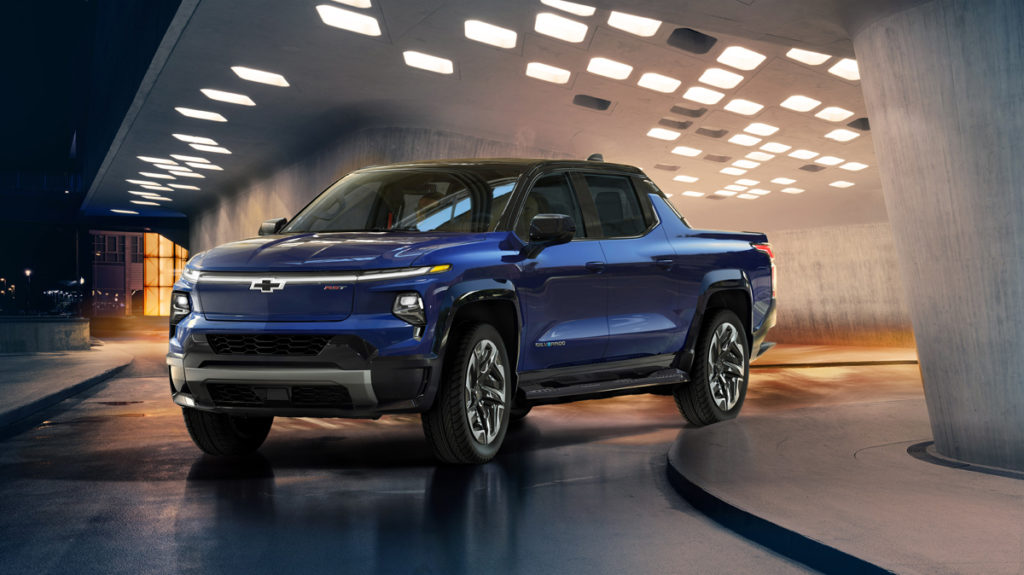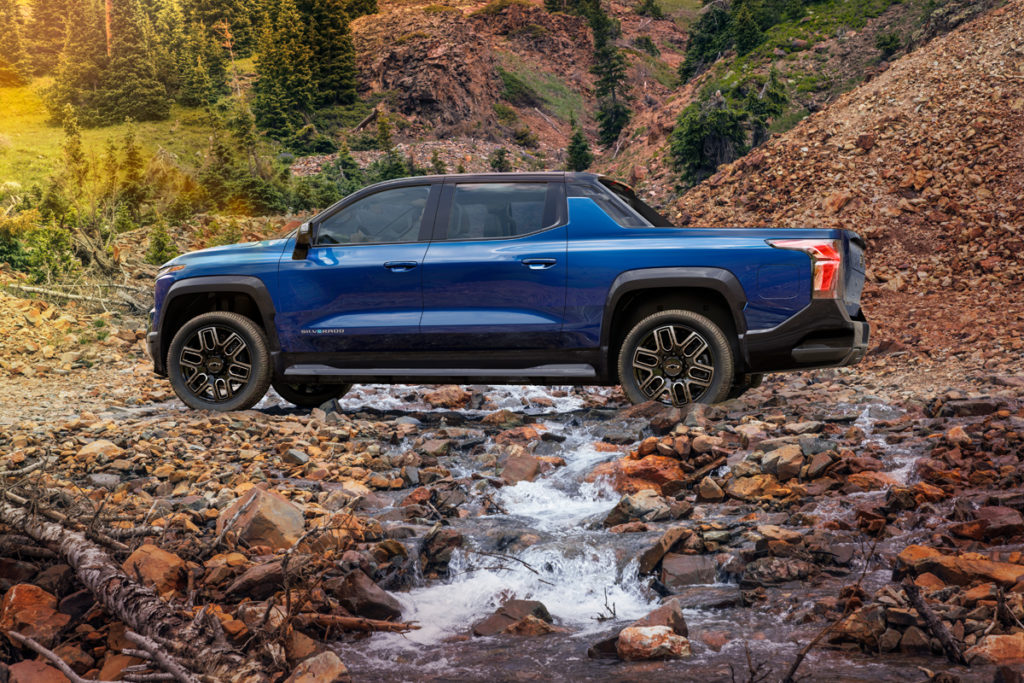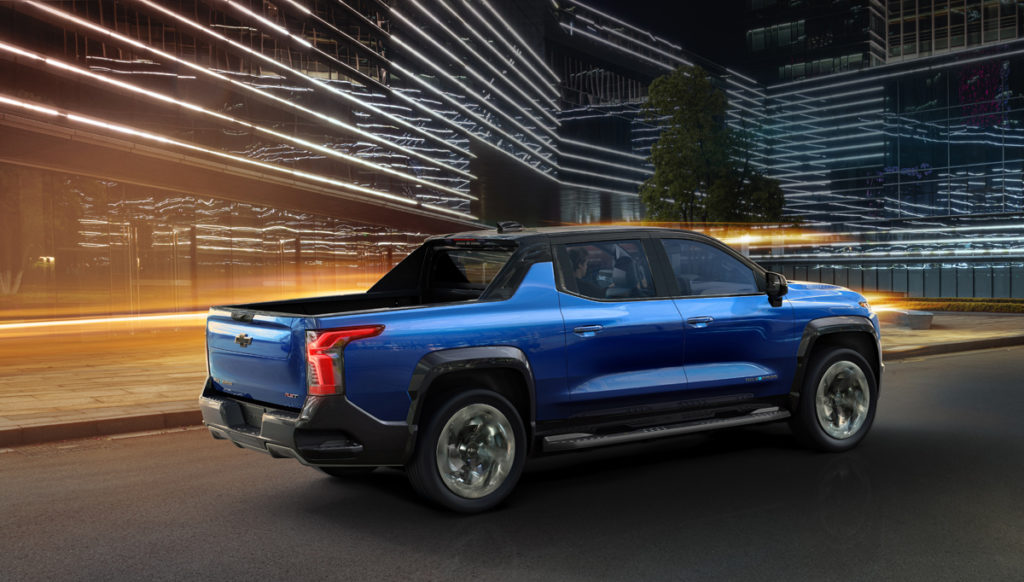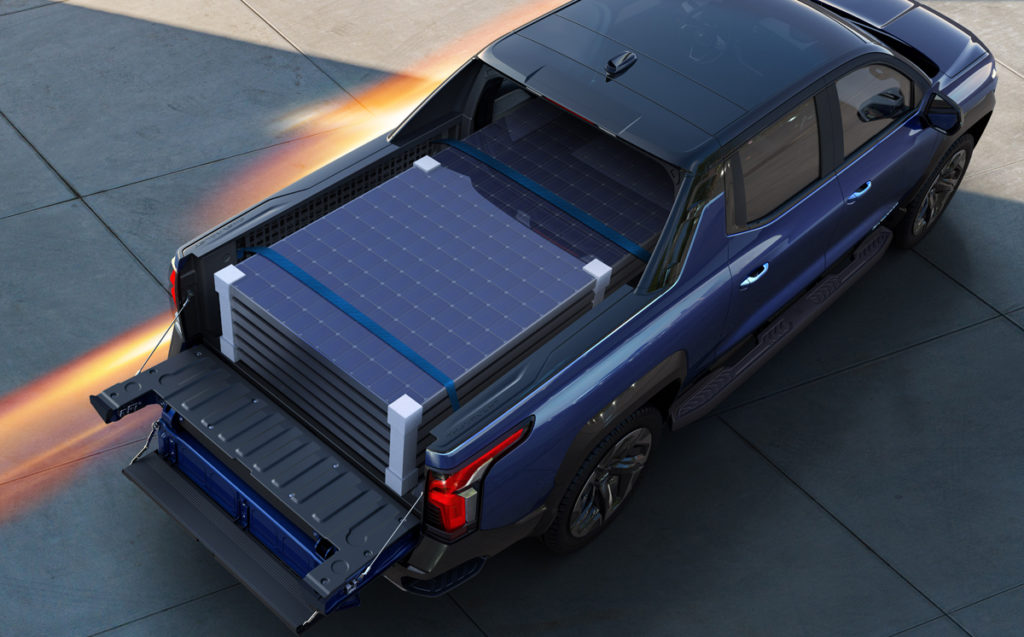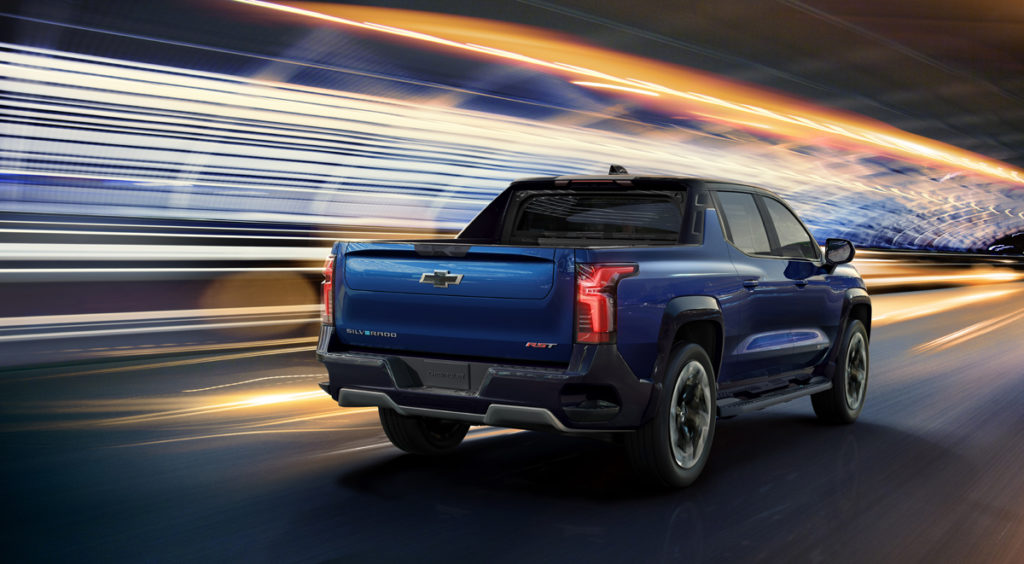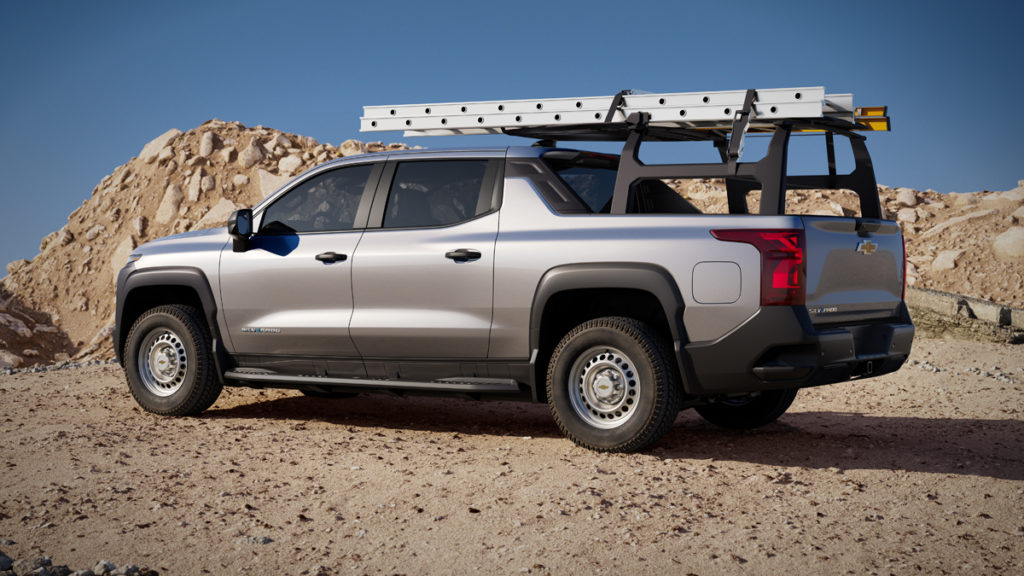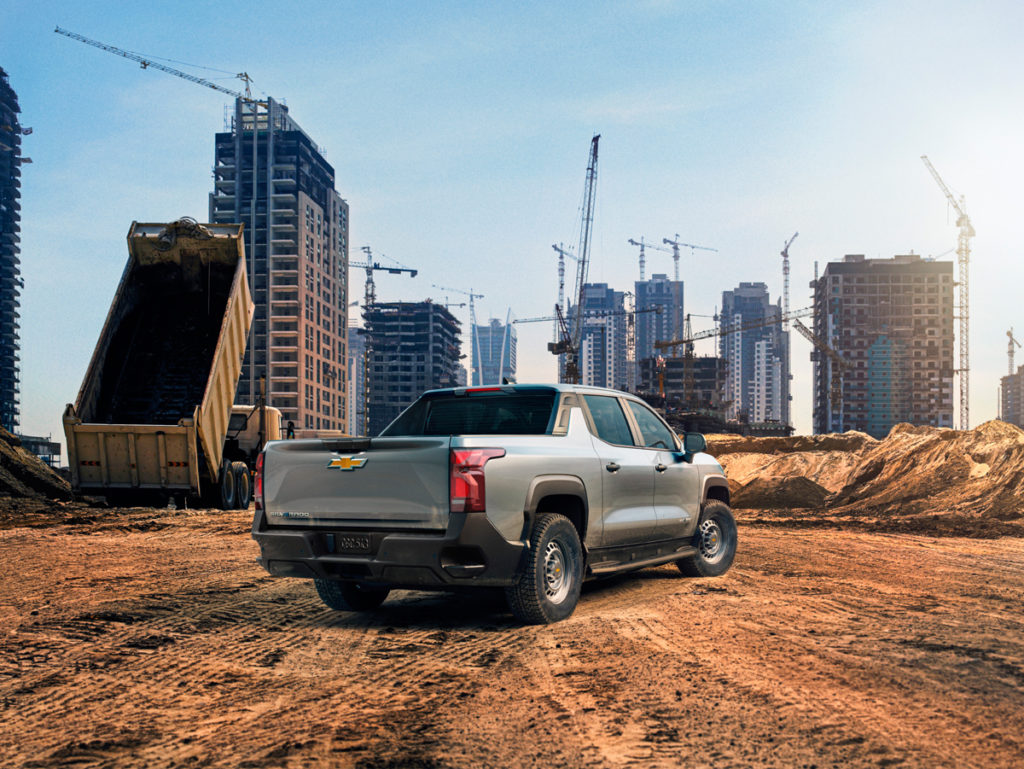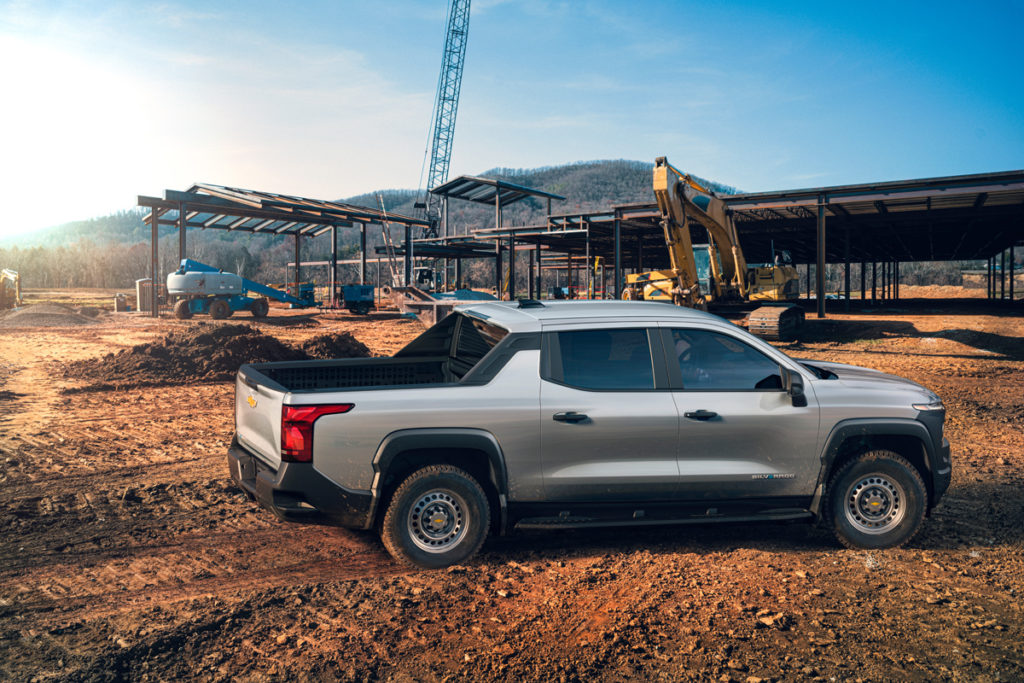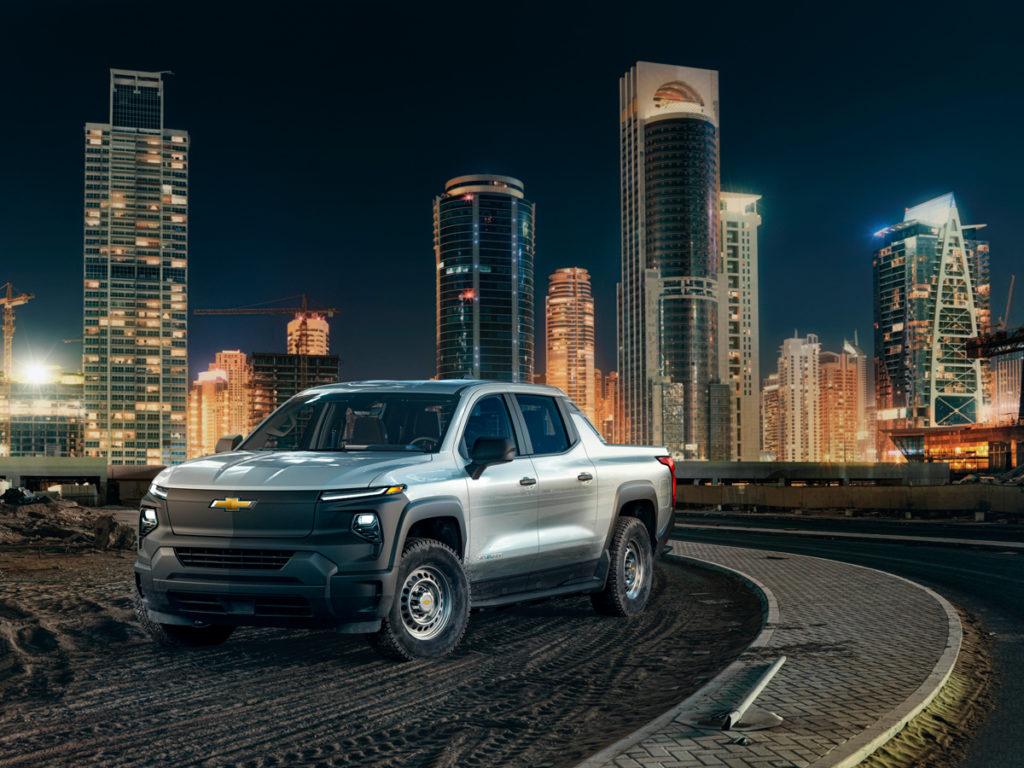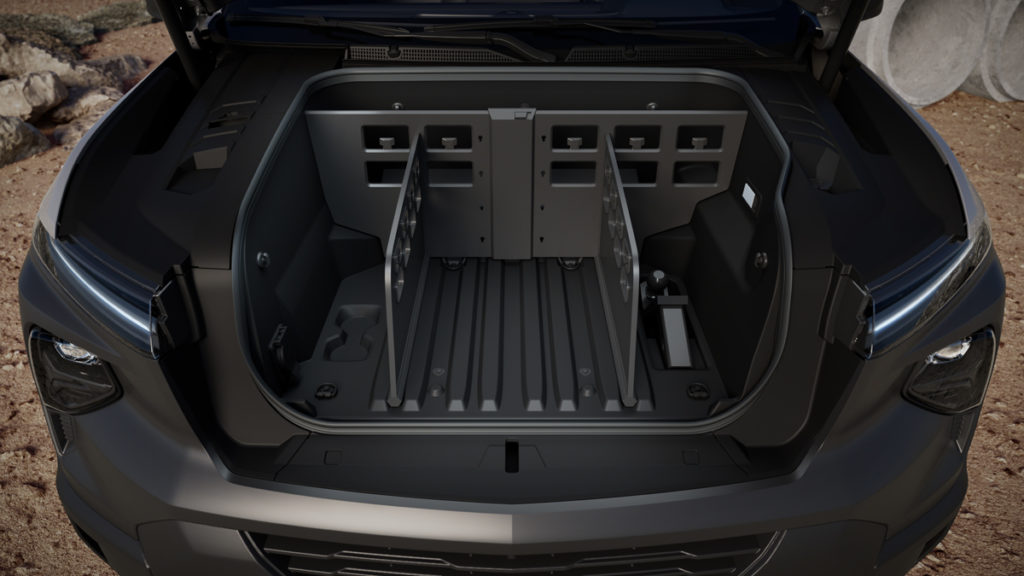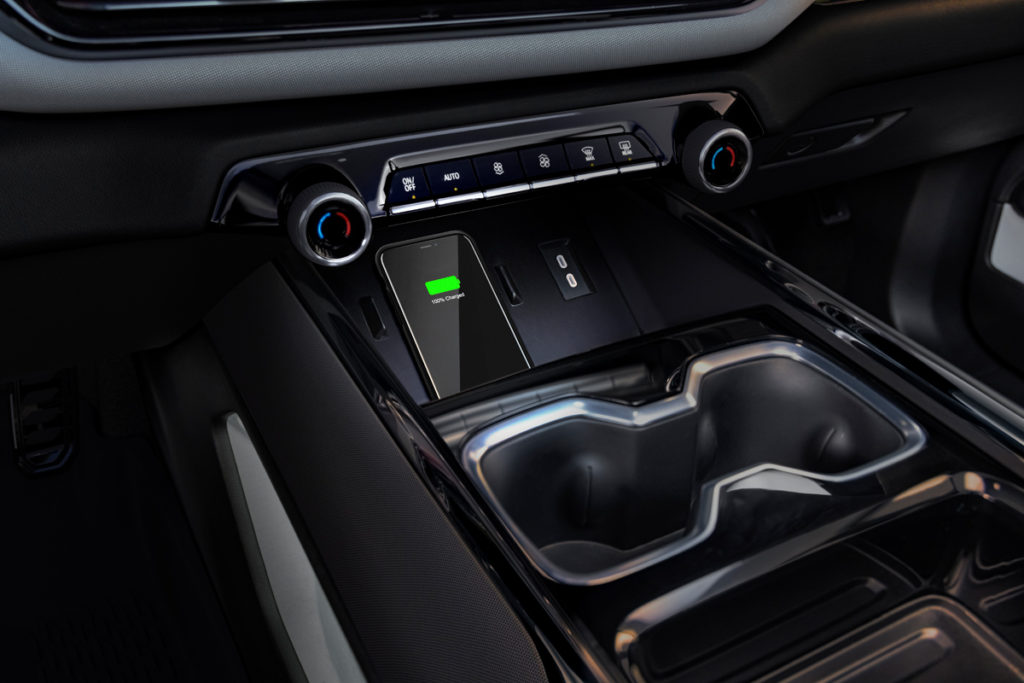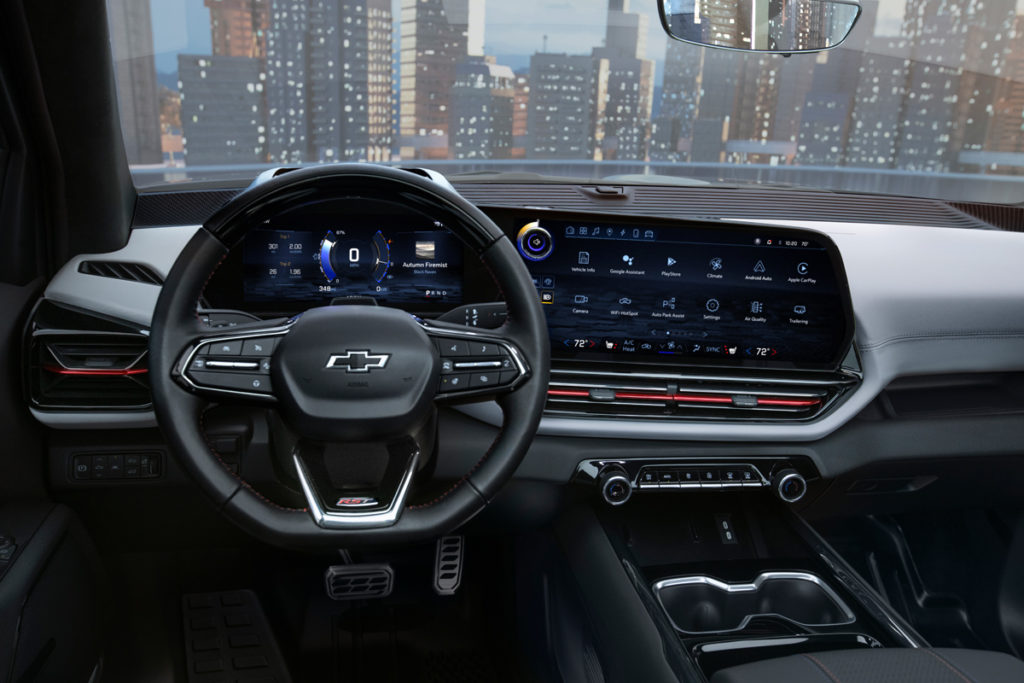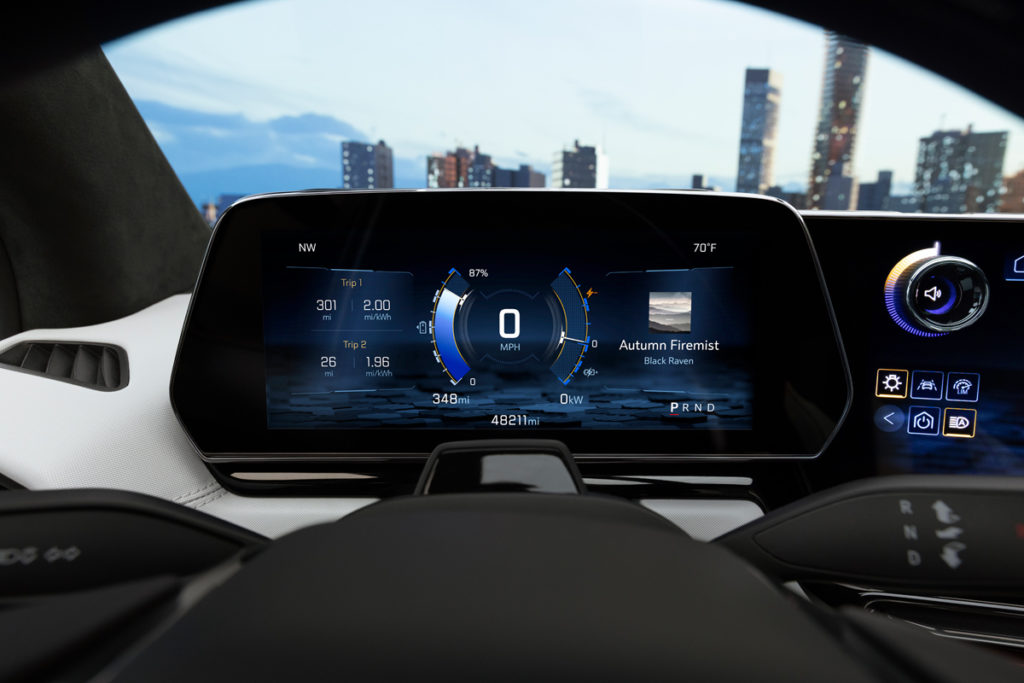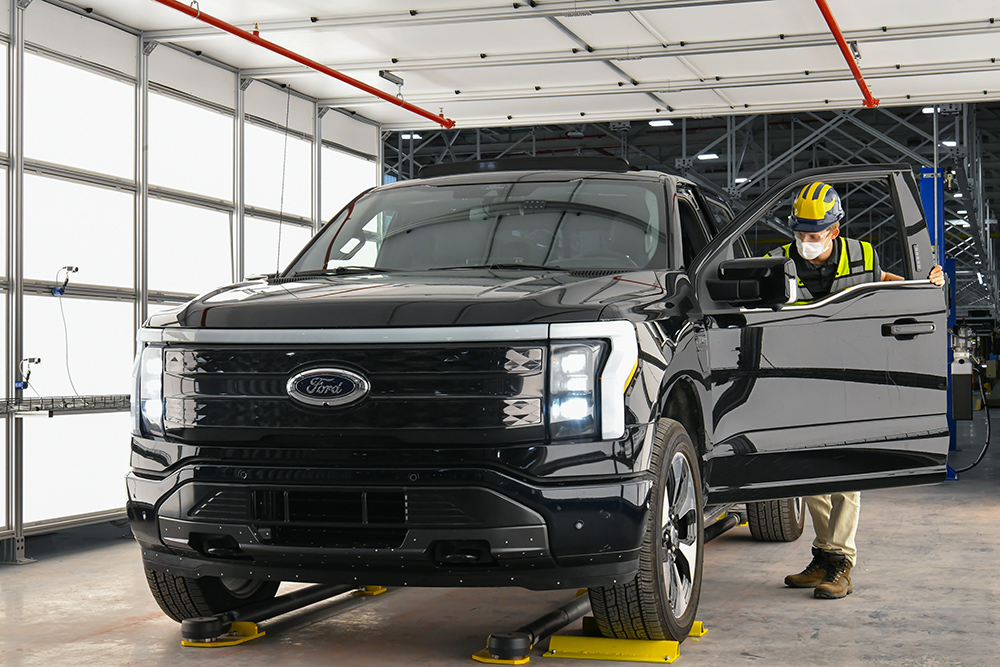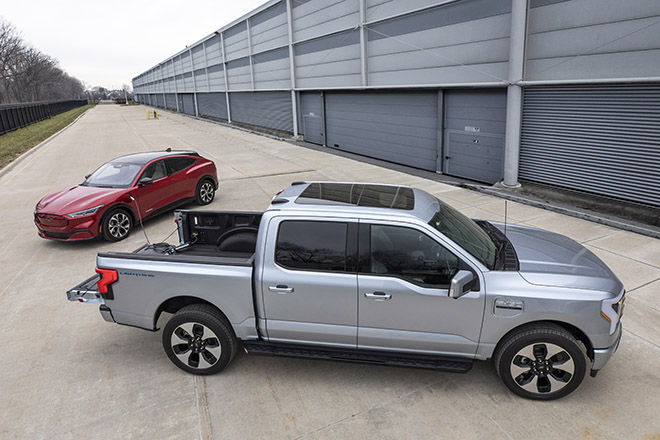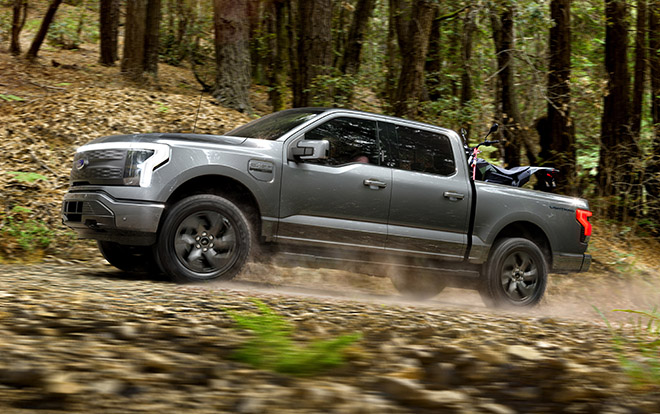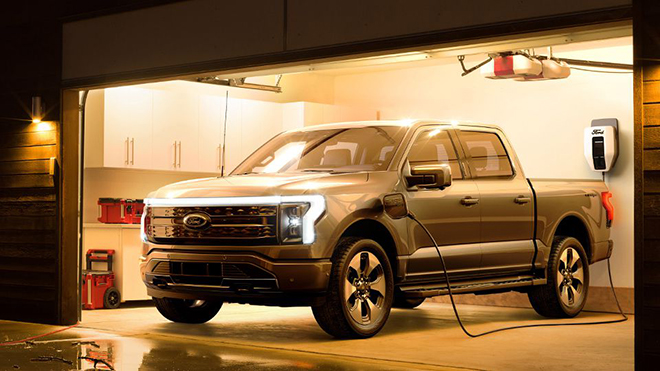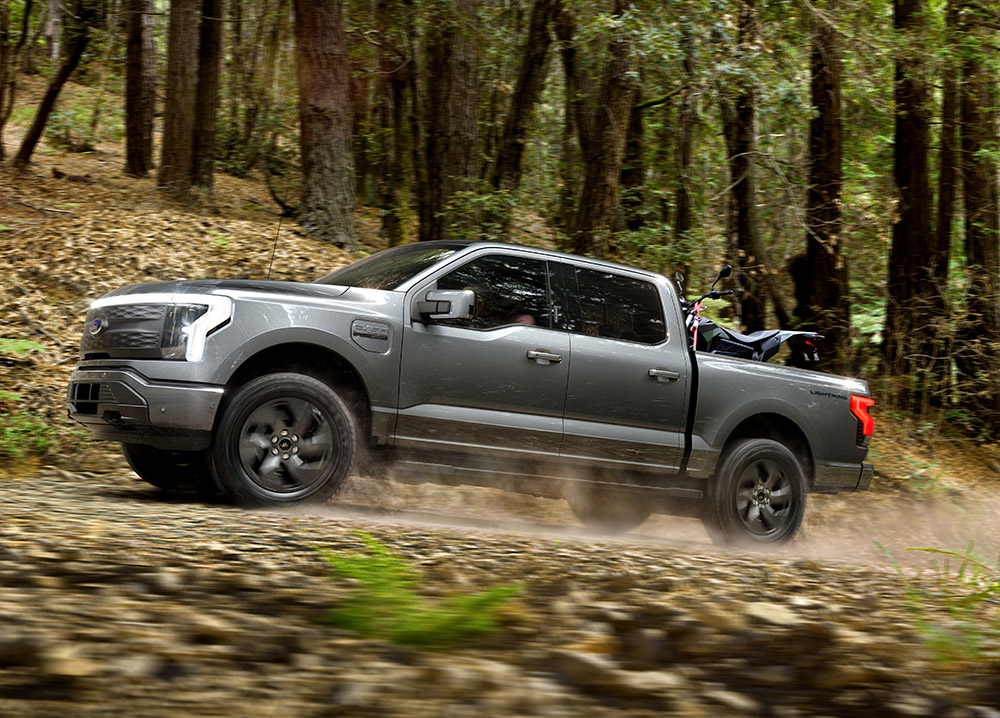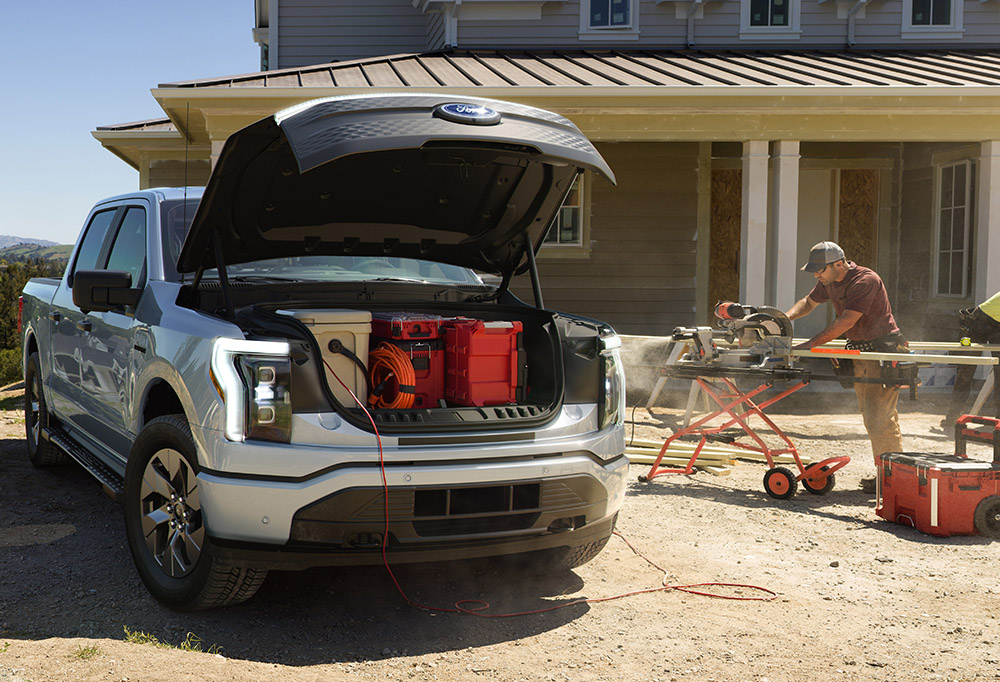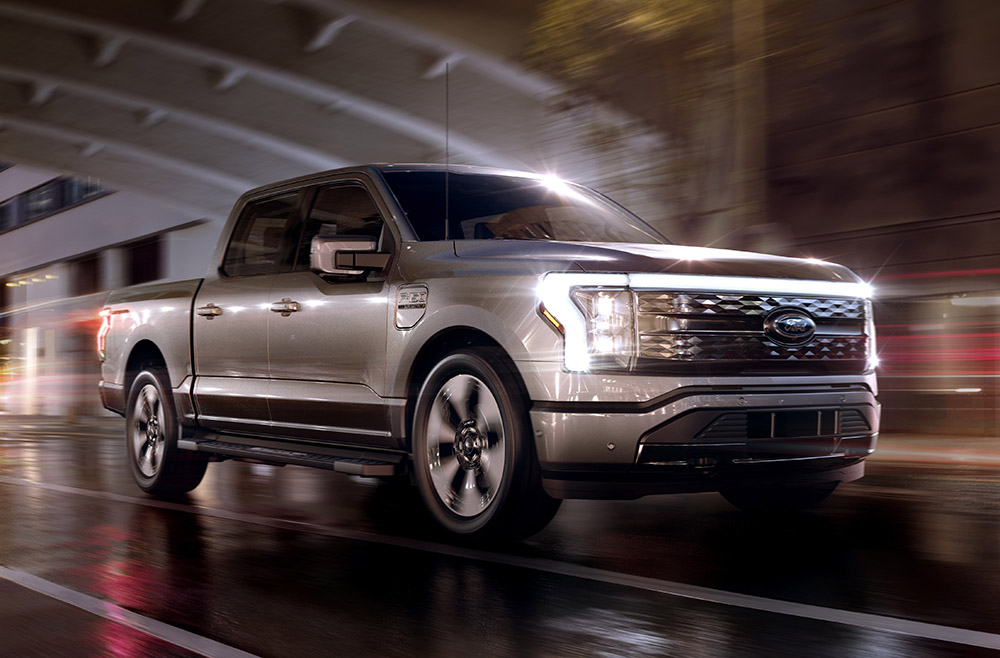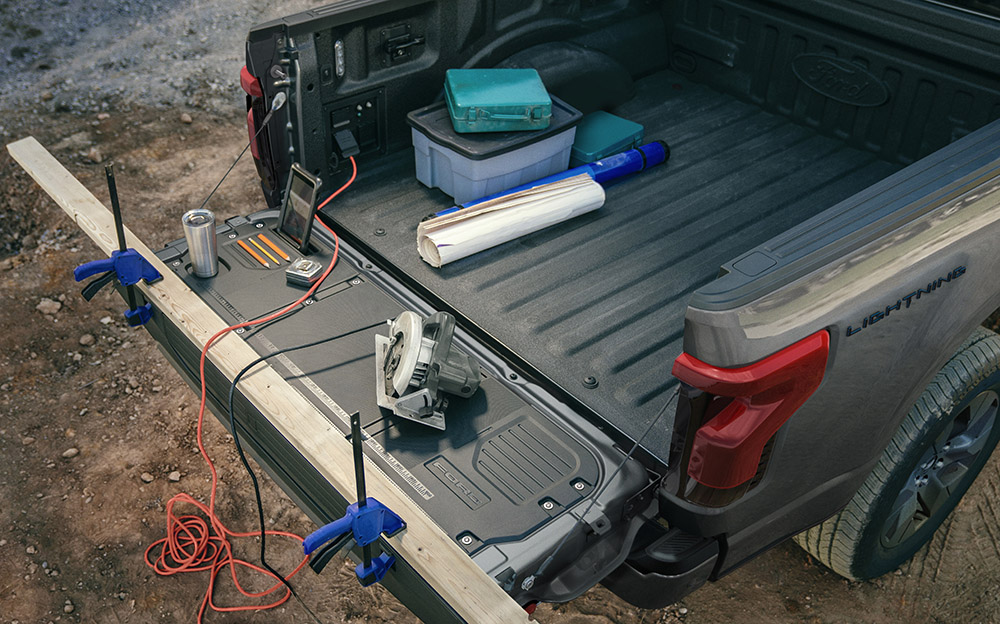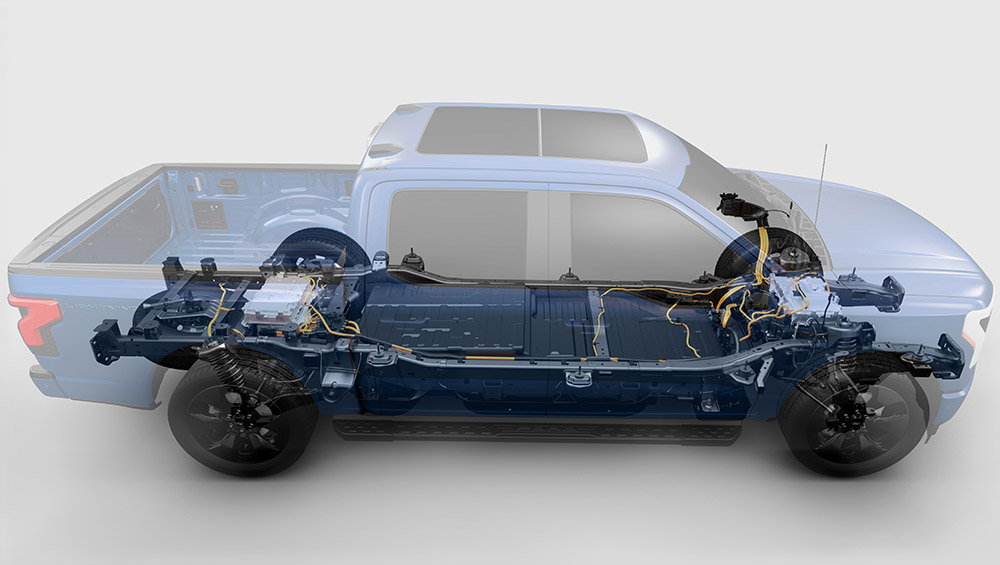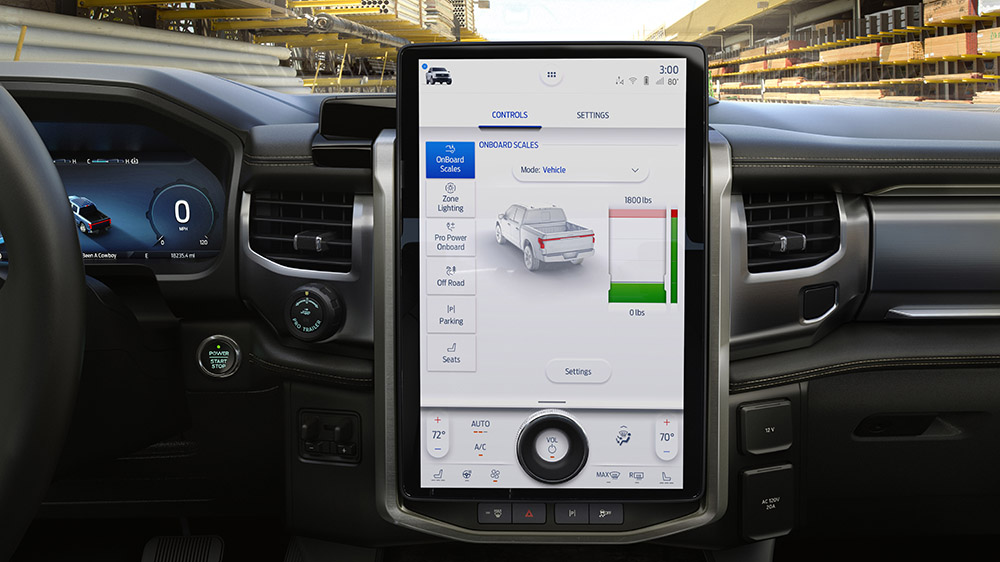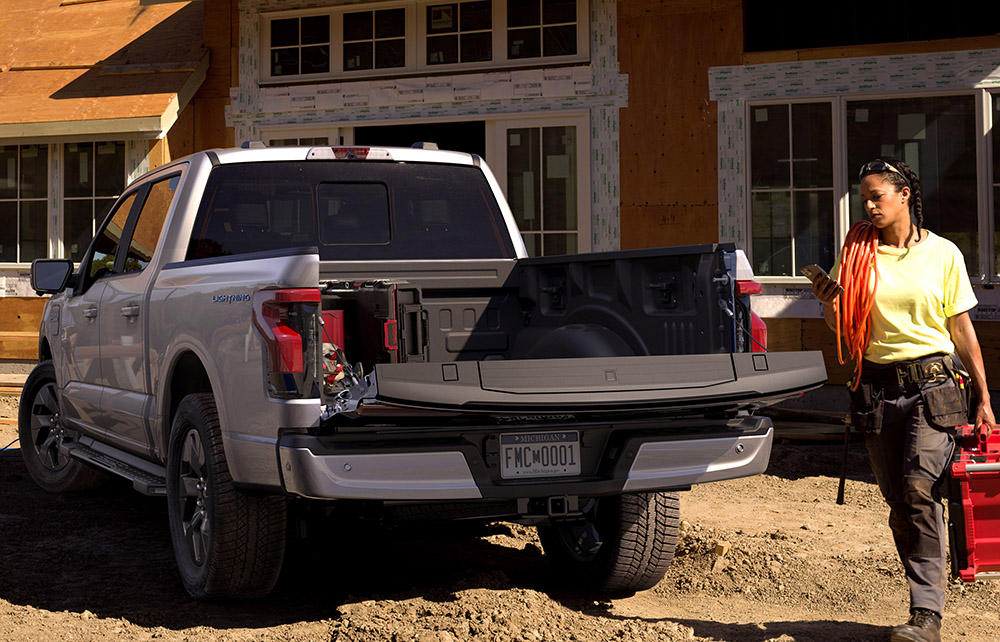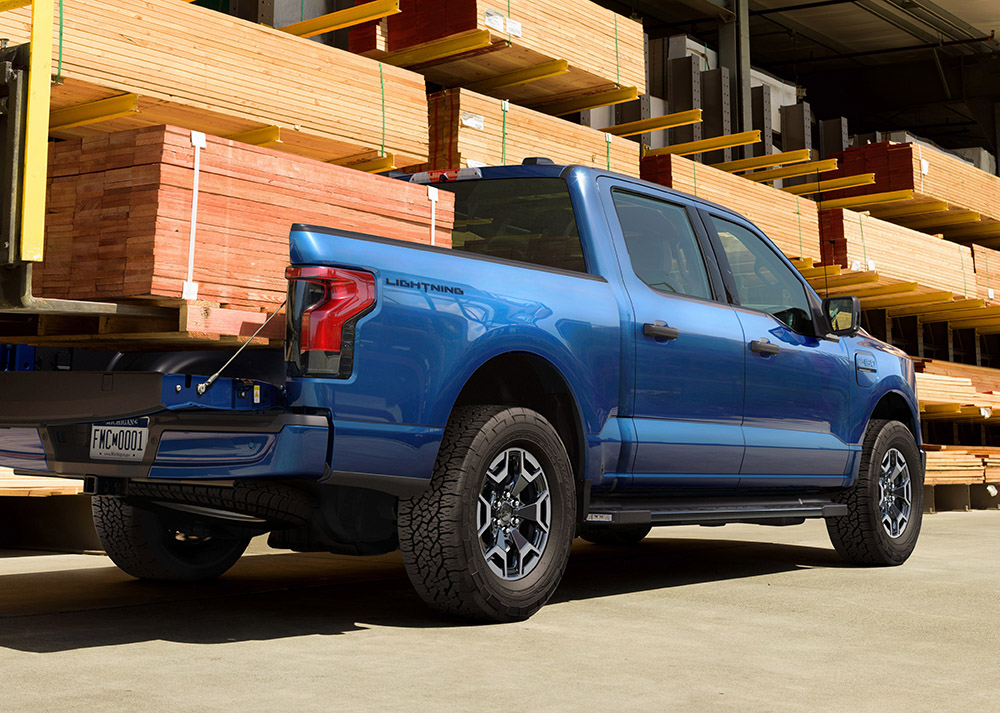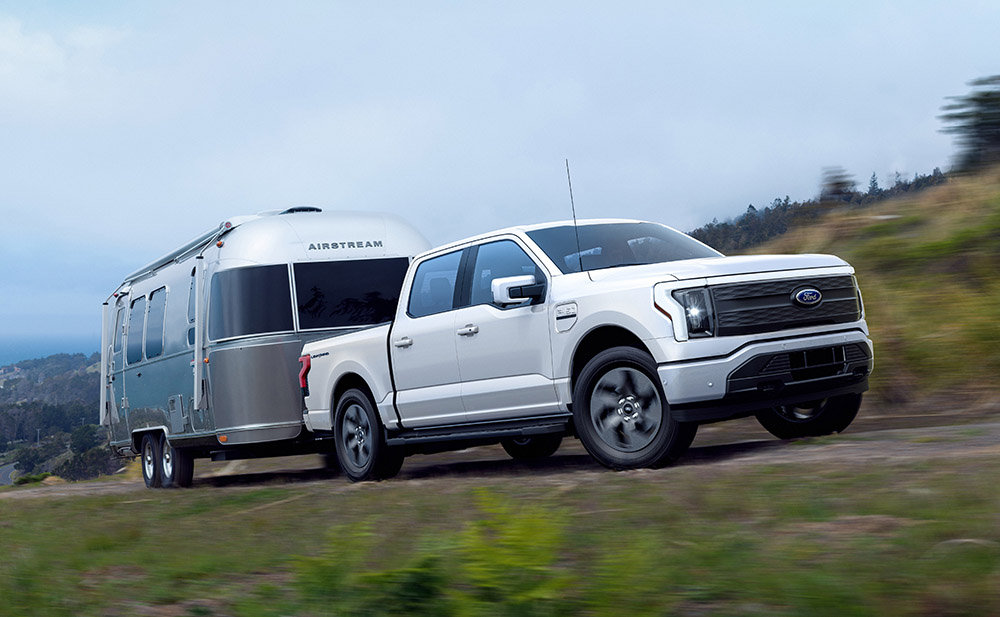Two electric pickups from GM and Ford makers take surprisingly different approaches to electrifying the full-size truck
The 2024 Chevrolet Silverado EV unveiled today by General Motors CEO Mary Barra shows the largest U.S. auto company’s determination to hang onto its core large-pickup market even as vehicles of all sorts accelerate the transition from gasoline to electric power. Reservations for the Silverado EV pickup will open at 1 pm ET today on Chevrolet’s website.
The first model to be delivered, in spring 2023, will be a WT (work truck) at a price GM hasn’t yet specified. In autumn 2023, Chevy will add a fully-loaded RST First Edition version for private buyers, at $106,695 including a mandatory delivery fee. Both versions to be delivered in 2023 will have more than 400 miles of range, it says. Ultimately, Chevrolet will offer Silverado EV models at prices from $40,000 up, including the standard RST, an off-road Trail Boss version, and more.
The electric Silverado will compete directly against the 2022 Ford F-150 Lightning, which is due to hit the market by mid-June, many months before the Chevy. That truck generated intense interest, with Ford having logged more than 200,000 reservations and closed off the list due to the overwhelming demand. Ford has announced new battery plants and assembly sites for its first electric pickup, and boosted production several times.
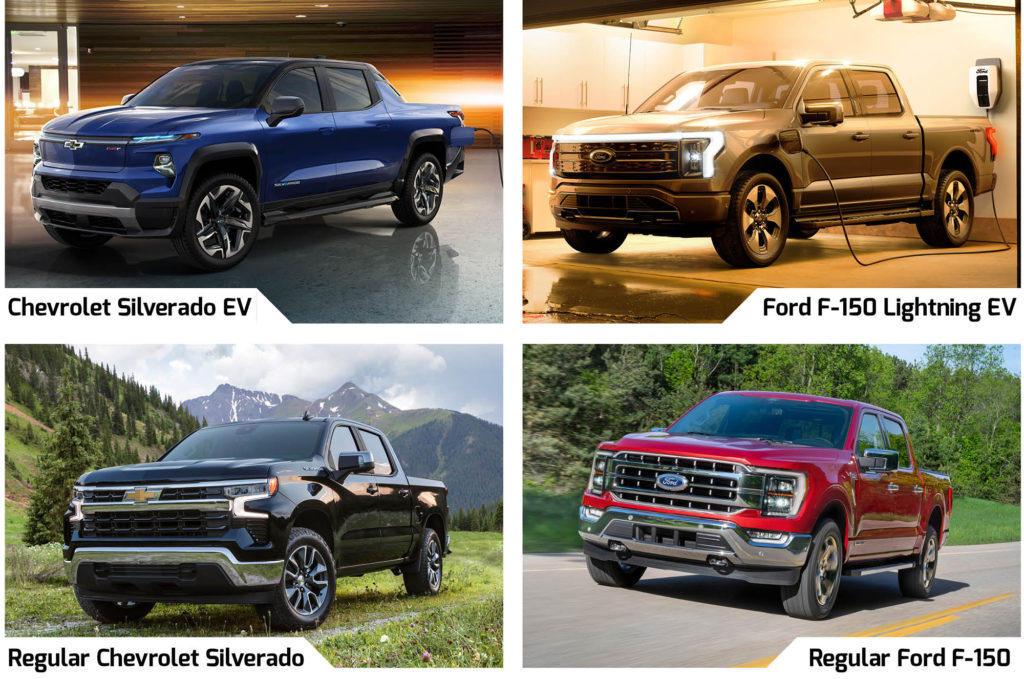
While the two trucks are similar in many ways, GM has taken a different tack than Ford in creating an electric version of its well-known full-size pickup. The Silverado EV—along with its electric GMC Sierra sibling that will follow—is far more distinct from its gasoline counterpart than is the Ford Lightning. The differing approaches underscore each company’s beliefs about what customers want in a pickup.
Specs similarities
Both the Chevy and Ford come solely as four-door, crew-cab trucks with mid-size beds. Both have motors front and rear, and fully independent suspension, a first in full-size pickups for each make. Single-motor versions will be offered as well. Chevy quotes up to 664 horsepower (488 kilowatts) and more than 780 lb-ft of torque from its Ultium powertrain; Ford’s comparable numbers are up to 563 hp (420 kW) and 775 lb-ft.
Each has long range—Chevy promises two models with 400-mile estimated ratings, Ford offers a version with 300 miles—from large battery packs that exceed 100 kilowatt-hours, though neither maker will release precise capacities. Both include DC fast charging, with Ford citing up to 150 kilowatts and GM touting up to 350 kW (using a clever technical trick that allows its 400-volt battery pack to charge at 800 volts). Chevrolet offers optional offboard power up to 10.2 kW; Ford’s option runs up to 9.6 kW. Each can charge other EVs with the necessary charging cable.
The key metric of towing capacity is similarly close: specific models of the Silverado EV and F-150 Lightning can each tow up to 10,000 pounds, though Chevy quotes up to 1,300 pounds of payload against Ford’s 1,800 pounds. Both trucks have a front trunk—Chevy calls it the “eTrunk,” Ford went all out and named it the “Mega Power Frunk”.
It’s in the cargo beds that specs start to diverge. The 2024 Silverado EV bed is 59 inches long, against the Ford’s 67 inches. But the Chevy’s optional ‘Multi-Flex Midgate’ is effectively a split rear-seat back that folds down to extend the bed length by letting cargo pass through the rear wall of the cab. Split into two parts, it allows long cargo (e.g. lumber or a kayak) to be loaded into the back portion of the cabin, while retaining one passenger seat beside it if desired. The length from the tailgate to the back of the front seat is more than 108 inches.
2024 Chevrolet Silverado EV images
How close should EVs be to ICE trucks?
That midgate is a GM trick last seen on the Chevrolet Avalanche sport truck, built from 2002 through 2013 over two generations. (Nichole Kraatz, Silverado EV chief engineer, swears the name “Avalanche” never arose among the product team.) The Silverado EV adds an optional power Multi-Flex Tailgate with a fold-up panel at the back end that lets the truck carry items up to 130 inches long.
The midgate hints at perhaps the biggest difference in the two pickup trucks. Unlike the traditional, body-on-frame Silverado with combustion engines, the Silverado EV dispenses with a body that mounts on frame rails. It is an all-new body design that sits on top of the Ultium Platform “skateboard,” which uses the battery as a structural element. The electric Silverado shares nothing besides a name with the gasoline version; Kraatz confirmed no body panels or parts at all are carried over.
“The Ultium Platform enabled our design and engineering teams to start from a clean slate,” said Kraatz. She mentioned as one advantage the sail panels that connect the back of the cab sides to the sides of the pickup bed. Those are there to smooth the airflow and reduce aerodynamic drag, giving it a lower drag coefficient than a pickup with a more upright cab back and a separate pickup bed.
Ford’s F-150 Lightning, on the other hand, retained the crew cab and the interior structure of the pickup bed from its gasoline siblings, giving both F-150 versions essentially identical silhouettes. The electric Lightning has an entirely different chassis, with a flat battery between much wider-set frame rails, and motors between each set of wheels. But on the outside, it is instantly identifiable as a slightly smoother version of the current F-150.
Ford said extensive surveys of F-150 buyers—both retail and fleet—indicated many were open to an EV version of the classic pickup. But, they stressed, it had to “look like an F-150” and “not be weird” (shades of Nissan Leaf, perhaps?).
Using the interior structure of the existing pickup bed ensured that all current “upfittings,” or custom equipment bolted into the bed, would install in the electric truck just as easily as it did in existing gasoline versions. Chevy’s Kraatz told us some current upfittings will work in the electric truck, but others—those at the front of the bed, where the sail panels connect to the bed sides—will have to be modified. Many fleet customers loved the idea of a toolbox inside the lockable front trunk, she added. That puts it at hip height, for easier access against the higher position of a toolbox at the front of the pickup bed.
2022 Ford F-150 Lightning
Crucial profit centers
For both companies, full-size pickup trucks (and their SUV counterparts) are a source of generous profits. That comes from high volume, brand loyalty among long-time customers, and to some extent, the different regulations applied to light-duty trucks. Each company faces many challenges during the transition into electric propulsion. They must predict and encourage customer demand, while sourcing enough battery cells, building new assembly lines for very different vehicles, and (perhaps hardest of all) getting their dealer networks up to speed on how to talk to shoppers about EVs.
The arrival of the 2022 Rivian R1T mid-size electric pickup truck won’t necessarily dent demand for the traditional, full-size pickups from GM and Ford. Hundreds of thousands of Chevy, Ford, and GMC customers buy these big trucks, and each company is determined to hold onto its core product and customers—but they’ve chosen different ways to go about it.
The core question really becomes who Chevrolet expects to buy the Silverado EV. Vice president of Chevrolet marketing Steve Majoros said they will include traditional Silverado buyers, but that it has to go far beyond a “1-for-1” replacement for gasoline versions. GM is also targeting buyers willing to consider an EV who are interested in a pickup format, including those migrating out of SUVs of various sizes. For those buyers, Kraatz suggested the better on-road dynamics provided by features like fully independent suspension, available air suspension, and four-wheel steering will make the electric Silverado a more familiar vehicle to drive for non-truck buyers than the gasoline models.
New customers on the coasts?
GM executives have said several times they expect demand for what will be more than a dozen electric models by 2025 to be “additive” to that from its traditional base. GM now sells far more in the center of the U.S. than in coastal states, and it needs to expand beyond that to take GM to the volumes it has promised by 2030.
There’s logic to the view that EVs could let them do that. Ford has said 75 percent of its F-150 Lightning reservations came from buyers “new to Ford.” Perhaps even more than Ford, Chevy needs to expand its footprint into the states quickest to adopt electric cars and pass legislation that encourages or mandates sales of zero-emission vehicles.
It’s noteworthy that Chevy plans to deliver a Silverado EV work truck first, with the retail version to follow. (Majoros stressed retail buyers are welcome to order the WT as well, complete with steel wheels.) It underscores the importance of electrification in cutting costs and reducing service requirements for commercial vehicle fleets, which may represent more low-hanging fruit than marketing and selling to retail customers via dealerships.
Chevrolet seems confident its fleet customers will take to a pickup truck with a different profile than the base Silverados they now buy in the hundreds of thousands. Ford feels differently. It promises to be a fascinating competition.
Sources: Chevrolet, Ford
Source: Electric Vehicles Magazine


